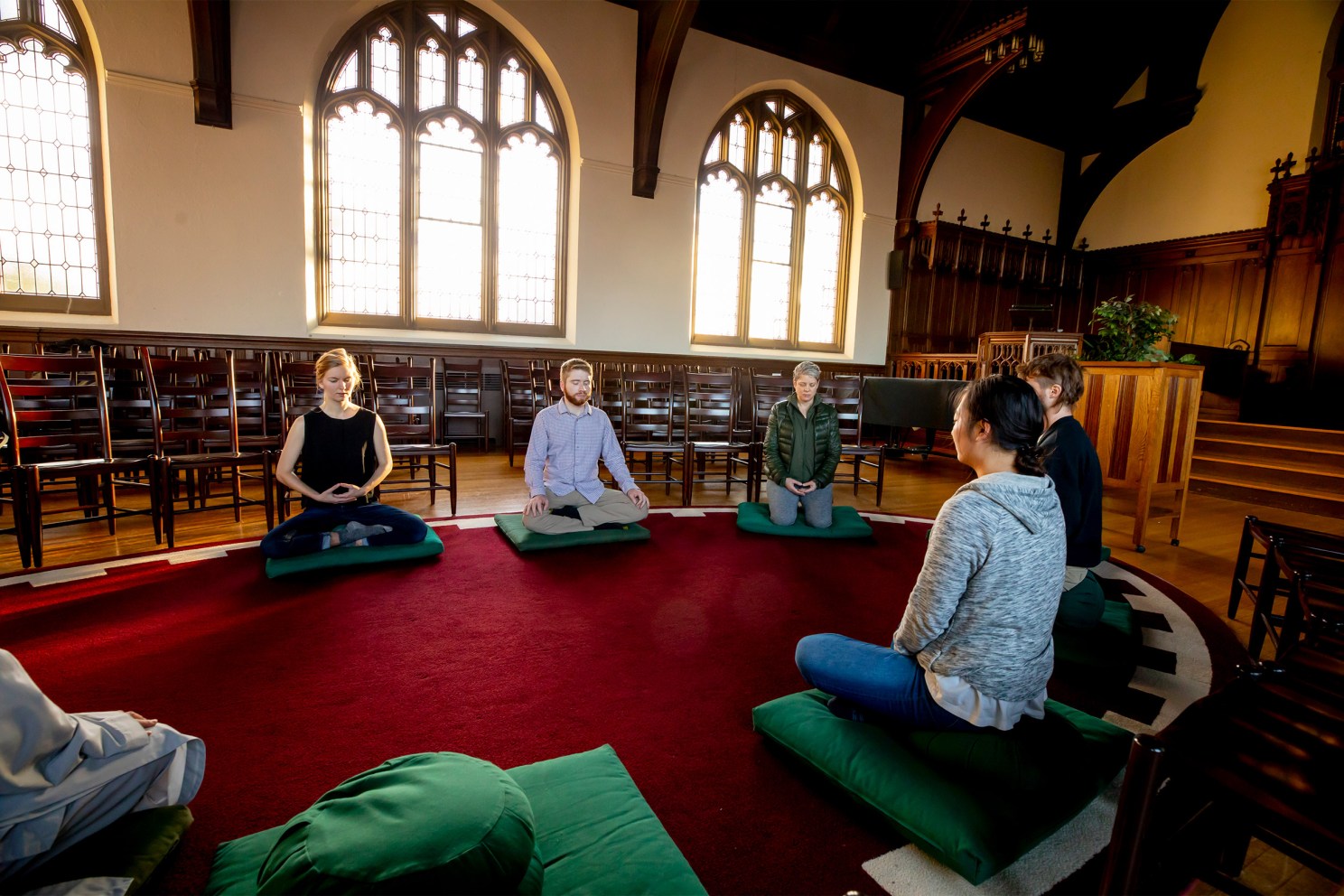Mainstream meditation and the million-dollar mindfulness boom

A meditation session at Harvard Divinity School’s Andover Chapel. Rose Lincoln/Harvard file photo
Today, mindfulness mediation can be found everywhere from schools to prisons to sports teams. The trendy fitness apparel company Lululemon is now advertising mindful clothing for men. There’s also Mindful Meats, Mindful Mints, and Sherwin-Williams sells a paint color they call Mindful Gray. There’s even Mindful Mayo, which you can buy at your local Whole Foods for $5.99.
So why has mindfulness meditation suddenly become so popular? Well, for starters, recent studies show benefits against an array of conditions both physical and mental, including helping to counter stress, chronic pain, and other ailments such as anxiety, depression, and post-traumatic stress disorder.
But are there possible downsides to mindfulness being fully embraced by capitalists as well as the mainstream? As David Gelles writes in The New York Times, “With so many mindful goods and services for sale, it can be easy to forget that mindfulness is a quality of being, not a piece of merchandise.”
This is the Harvard Religion Beat, a podcast examining religion’s underestimated and often misunderstood role in society. In this episode, we’re speaking with Chris Berlin, mediation teacher, instructor at Harvard Divinity School, and counselor to Buddhist students at Harvard. We wanted to get his insight into this mainstreaming of mediation and what he thinks the reasons are for today’s mindfulness boom. Berlin also talks about the potential issues faced in our new digital mindfulness landscape, as well as how small benefits can lead to lasting positive change.




